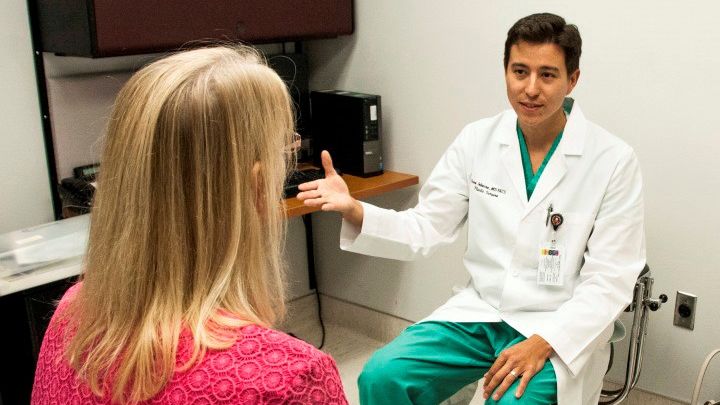Research and Pregnancy

Before pregnant women search for information online regarding symptoms, conditions, questions, or concerns they may have, it may be helpful for women to first learn how research is conducted during pregnancy and why information is hard to find and interpret.
This can set the foundation for their understanding regarding why information is so contradictory and confusing, why some research studies indicate something is safe while others find potential harm, and why health care providers (HCP) disagree often – even on items as basic as whether a particular food is safe – and why formal recommendations regarding some procedures, most medications, or general safety information during pregnancy is ambiguous or nonexistent.
For pregnant women attempting to get an answer to their concern, this is incredibly frustrating. HCPs will provide an answer in most cases, but this does not always relieve women's anxiety so they search online for additional information.
Women can mitigate this by having detailed risks and benefits conversations with their HCPs regarding their own, individualized pregnancies. Women need to talk to their HCP, ask questions, and ask them for the information/reasoning or experience behind their decisions. If women understand why HCPs are confident in their recommendations, they can be as well, especially if women feel they were a part of the discussion and ultimate decision.
Background
Pregnant women want definitive answers to their safety-related questions regarding medications, air travel, cosmetics, cleaning products, foods, drinks, and medical procedures, among so many others because they want to know that with anything they eat, take, do, or use – they are not harming their baby.
Women want to have immediate answers to their questions because anxiety during pregnancy is loud and constant, and almost always a waiting game.
Women want answers to questions like:
Do these cramps mean a miscarriage is coming?
Will this medication harm my baby?
Did I exercise too hard?
Is this cheese safe during pregnancy?
Could my face wash have chemicals that could cause birth defects?
Is my deodorant safe or should I switch brands?
I haven't felt my baby move recently. Is something wrong?
They also want to know if bleeding in the first trimester always means a miscarriage; if the heart rate during their first ultrasound was high enough; should they call a doctor or are they overreacting; are they in labor or is it false; and overall – but most detrimental – did they just do/take/eat something that could have harmed their baby.

These questions are not because women are more paranoid now – it is because they are learning and have more access to information on pregnancy than ever before; but the right information is very hard to find and interpret based on a woman’s particular pregnancy and overall health.
Not having answers is terrifying, and women look for definitive answers to relieve their anxiety, someone to tell them everything is fine. It is important that pregnant women – and their partners/families – understand why research is the way it is and what it means before beginning a dive for answers. HCPs do not know a lot of about the safety of outside (“environmental”) factors or how they affect pregnancy and it is important that pregnant women understand why.
Learning about obstetric research and how it is completed is critical for understanding the latest information regarding everything from fetal development, nutrition, body changes, nausea and vomiting of pregnancy, safety, symptoms, conditions, and labor and delivery.
Is It Safe?
Incorrect: Is [X] safe during pregnancy?
Correct: What are the risks and benefits of [X] during my pregnancy, based on current research regarding [X], along with my own personal medical history, stage of pregnancy, overall health, risk factors, cultural background, and HCP’s recommendations?
Based on how research is conducted on pregnant women and during pregnancy itself, the vast majority of safety-related questions cannot be answered with a straightforward yes or no.
There is an overwhelming lack of information regarding most environmental aspects (outside factors) during pregnancy. Therefore, most safety-related concerns require a risks and benefits discussion with an HCP because there just is not enough data.
While some answers may be more obvious than others (recreational drugs, combat sports), a significant amount of outside agents (cosmetics, cleaning products, medications) have almost no pregnancy-related data to help inform women or their HCPs on possible risk.
Therefore, HCPs and pregnant women are faced with making health care decisions (some minor, some major) – that could affect the health of themselves and their baby – based on insufficient clinical evidence.
Further, women then often take their decision, or their HCP’s recommendation, to online forums to compare it to the advice given to other pregnant women. Women either get confirmation of their decision through this practice, or they start to doubt or question their HCP’s recommendation – or worse, their own decision.
While inconsistent advice from different HCPs is a common occurrence in any field of medicine, there is even more inconsistency in obstetrics due to well-established pregnancy-specific research hurdles that leads to a significant lack of information.

A Lack of Information
Despite women delivering babies since the beginning of humans, science and medicine still know very little about pregnancy, and most major advances have occurred in only the last hundred years.
For example, the hormones progesterone, estrogen, and human chorionic gonadotropin (HCG) were not discovered until the 1920s, researchers did not know medications crossed the placenta until the 1950s, and epidurals were not perfected or popularized until the 1970s and 80s.
Due to the normalness of pregnancy, and its time frame of "only" 9 months, its symptoms, conditions, complications, and outside influences do not get much research attention (there are many advocates attempting to change this).
Further, since most pregnancy-related symptoms go away after delivery without any treatment at all (“self-limited”), there is not much motivation or research incentive to study management techniques or treatment methods, despite the havoc some of these symptoms cause on women’s lives (such as nausea and vomiting of pregnancy).
However, researchers are starting to argue this is no longer valid – medicine now understands that a fetus’s environment (i.e. the pregnant woman) can affect that infant/child well into adulthood, and possibly their entire life (known as fetal programming or Barker's hypothesis). Therefore, pregnancy (and its symptoms and complications) should no longer be considered a “self-limiting” condition.
Currently, most of the information available today is in the form of case reports, drug registry data, and/or retrospective cohort trials (comparing pregnant woman exposed to agent X, with pregnant women not exposed to agent X), which forms the basis for current recommendations during pregnancy. Additionally, most of this available data is the result of “opportunistic studies” performed when pregnant women are already taking a specific medication.
There are significant limitations to the above; study sizes are small, study populations do not represent pregnant women as a whole, and accurate reporting of dosing and exposure to medications is very inaccurate. Therefore, HCPs and pregnant women have vastly incomplete or misleading data to work with when attempting to make a medical decision during pregnancy.
For example, clinical trials are the gold standard toward advancing medicine as they look at new ways to prevent, detect, or treat disease. However, pregnant women are routinely excluded from clinical trials due to ethical, liability, and financial concerns, even though various U.S medical organizations recommend the inclusion of pregnant women when appropriate.
Fewer clinical drug trials are conducted during pregnancy than in any other major health field.
Due to this, the use of medication during pregnancy is one of the least developed areas of pharmacology and current available data is considered very poor. Up to 98% of medications have little to no safety data to guide dosing, effectiveness, or safety during pregnancy.

In a study that assessed the average time for a medication initially classified as having an "undetermined" teratogenic (fetal harm) risk, to be assigned a more precise risk was 27 years. The authors of the study noted this significant delay, as well as the general lack of information, “remains a serious public health problem".
Further, without better data, medication cannot be approved for use during pregnancy. Only a dozen medications are approved by the United States Food and Drug Administration (FDA) specifically for pregnancy, most of which are used during labor or to prevent labor.
Therefore, almost any medication used to treat an illness, symptom, or condition during pregnancy (hypertension, respiratory infections, diabetes, depression, nausea and vomiting, acne) — is used without approval from the FDA, which leads pregnant women to feel guilty, anxious, and stressed over any medication use.
Additionally, there is very little incentive for drug manufacturers to participate in any drug approval trials for pregnancy.
If a medication currently on the market becomes linked to birth defects, the manufacturer can argue the drug was never approved for use in pregnant women and it can avoid a barrage of lawsuits. This is also a major reason drug companies label most of their drugs contraindicated during pregnancy, or at least “in the first trimester”; these companies also know pregnant woman may have no choice but to use the medications anyway.
Studies have estimated that more than 60% to 99% of pregnant women use at least one medication (prescription or over-the-counter) during their pregnancies, such as painkillers, antibiotics, asthma, sleep, and anti-nausea medications. Other studies estimate the average woman receives 1.3 prescriptions per obstetric visit and two-thirds of women use 4 to 5 medications during pregnancy and/or labor.
Research has indicated that pregnant women using necessary drug treatments may suffer permanent psychological stress and depressive symptoms for the entirety of their pregnancy because of concern for their baby.
The reverse can also happen; women can stop taking necessary medication they need during pregnancy out of fear the medication could harm their baby; this could result in a dramatic decline in the physical or mental health of pregnant women, which has its own potential consequences (i.e. there is a cost to caution).

This lack of data was the reason for the criticism and eventual replacement (2015) of the FDA Drug Rule Classification system that was created in 1979, which labeled medications A, B, C, D, or X. The system attempted to create some clarification for pregnant women and their HCPs, but was based on low-quality evidence and caused significant confusion and anxiety when pregnant required a drug that was either categorized as C, D, or X – especially C, which was often very ambiguous.
In June 2015, FDA approved the Pregnancy and Lactation Labeling Rule (PLLR) as a replacement. The most significant change was the abolishment of the letter categories, which was replaced with individualized narrative summaries for each medication, which includes:
“risks of using a drug during pregnancy and lactation, a discussion of the data supporting that summary, and relevant information to help health care providers make prescribing decisions and counsel women about the use of drugs during pregnancy and lactation".
However, the research and available data to clearly and accurately do the above does not exist.
Even when research hurdles are overcome, and good-quality research is completed and published, there are further obstacles regarding limitations and interpretation of the resulting data.
Interpretation of Findings
Pregnancy-related changes in the gastrointestinal tract, the cardiovascular system, the kidneys, and other organs may profoundly alter the ways that drugs, chemicals, nutrients, and the effects of various activities (i.e. exercise) are processed by/act on the body. Therefore, even when research is completed and published, results are almost always taken with caution.

When blood volume doubles in pregnancy, the effects on drug metabolism are significant; drugs can be metabolized and cleared much more quickly. Therefore, dosing and interval recommendations established for non-pregnant women cannot automatically be extrapolated to pregnant women.
Studies on medication safety also commonly rely on an oversimplification of medication use into exposed or non-exposed, and do not consider or evaluate dosing or timing when evaluating safety and pregnancy outcomes (i.e. ondansetron/Zofran®).
Further, pregnant women have different medical histories, weights, heights, metabolisms, underlying medical conditions, and potential confounders such as smoking and other medication use, all of which can affect results if these are not taken into account.
Determining effects on the fetus can be much more difficult. Chemical compounds cross the placenta through different means and at different rates, and possibly per woman. Further, the placenta grows and changes as pregnancy progresses, which may affect the placental barrier at any given time (for example, researchers are still unsure how much/if fluoride crosses the placenta).
In addition, some harmful effects on the fetus could be very subtle, but have a major impact, such as neurological or behavioral disorders. These types of effects can take years to develop; by then, it can be exceedingly difficult to tie that behavior to a medication or other environmental exposure during pregnancy (i.e. low amounts of alcohol during pregnancy).
Lastly, although animal studies are considered essential, results are not always applicable to humans, especially pregnant animals/humans.
Regarding pregnancy-related conditions, there lacks consistent agreement on definitions for these conditions (hyperemesis gravidarum, miscarriage), as well as consistent methods to measure results. This can greatly affect research conclusions, as well as the ability to effectively compare studies or reviews.

Of additional significance for pregnant women to be aware of is publication bias, which may greatly affect women who are reading research on their own. Publication bias has been defined as the selective publication of studies. For example, papers that have a “positive” conclusion (i.e. an association) may be more attractive to publish than papers that report a “negative” conclusion (i.e. no association; likely occurs often regarding caffeine).
Further, these “positive” studies are then promoted through the media with alarmist and misleading headlines, such as “doubles the risk” even though the overall risk is still considered incredibly low.
Clinical Practice
The goal of evidence-based medicine is to turn high-quality research into clinical practice. However, the latest research that could positively affect a woman and her pregnancy does not often make it mainstream or even to HCPs.
Further, although recommendations and guidance to HCPs by professional organizations changes over time based on new information, this guidance does not have to be followed, or even agreed upon by HCPs in practice.
Further, some HCPs are better at staying up to date on current research than others, while some HCPs rely more on their decades of clinical practice rather than newer findings.
Online forums have put this inconsistency on full display. Women read confusing, contradictory, and vague guidance from women's different HCPs regarding the safety of foods, medications, certain activities, chemicals, procedures, and even management methods for various symptoms (this is not exclusive to obstetrics).
For example, some HCPs may tell their patients to stay away from feta cheese, while other HCPs tell their patients feta is safe. One HCP may always prescribe ondansetron to their patients with nausea and vomiting of pregnancy ("morning sickness"), while other HCPs may never prescribe it. (HCPs are interpreting data differently and this creates dramatic uncertainty in women their entire pregnancies.)
Action
Despite the research hurdles above, there are ways women can mitigate their anxiety and frustration over any medical or lifestyle decision they make during their pregnancies.
Although HCPs may disagree (which occurs in every specialty) HCPs do possess obvious medical training and clinical experience that should not be discounted. Since different interpretations of data is natural, women can mitigate this by having detailed risks and benefits conversations with their HCPs regarding their own, individualized pregnancies.
Most answers regarding anything in pregnancy are not straightforward. Therefore, women need to talk to their HCP, ask questions, and ask them the information/reasoning or experience behind their decisions. If women understand why HCPs are confident in their decision, they can be as well, especially if women feel they were a part of the discussion/decision.

Women should also understand that if they go home and start searching online, they may begin to doubt the well-informed decision they just made. Pregnant women have different backgrounds, medical and obstetric histories, underlying conditions, and overall levels of health. HCPs make decisions for their patients based on their specific patients' backgrounds; therefore, this must also be taken in account when noting different recommendations (read Risks and Benefits).
Partners/Support
It is completely normal for women to be very anxious, concerned, or worried over almost anything in pregnancy. A lack of safety and management related information during pregnancy causes extreme anxiety and frustration for women who want answers to seemingly basic questions.
Women just want to know if something they eat, do, or take could hurt their baby. Unfortunately, science does not always have the answers, even for things non-pregnant individuals take for granted, such as eating a deli meat sandwich, exercising at the gym, taking cold medication, taking a hot shower, and even having sex.
While some women certainly worry more than others, at some point, a partner or family member will experience this in the pregnant woman. Since relieving her anxiety may be the only thing a partner can do, partners/family members should let her express her concern and anxiety, just listen to her, and help talk her through it.
Partners/family members should read Risks and Benefits to learn the best way to think through and talk about a decision with the pregnant woman and her HCP to relieve as much anxiety and uncertainty as possible.
Resources
Pregnancy Research Initiatives (U.S. Food an Drug Administration)
Enrolling Pregnant Women: Issues in Clinical Research (Women's Health Issues; January 2013)
Treating for Two: Medicines and Pregnancy (U.S. Centers for Disease Control and Prevention)
Medicine and Pregnancy (U.S. Food and Drug Administration)
Teratogen Information System (University of Washington)
MotherToBaby (Organization of Teratology Information Specialists)
United Kingdom Teratology Information Service
European Network of Teratology Information Services
Prescribing medicines in pregnancy database (Australian Government Department of Health)